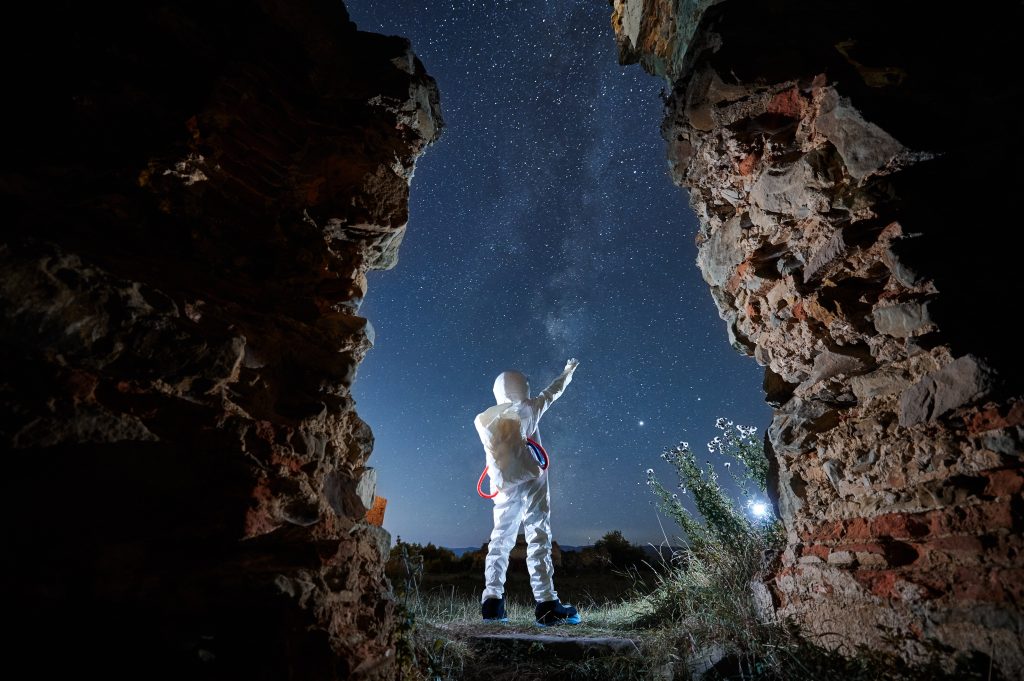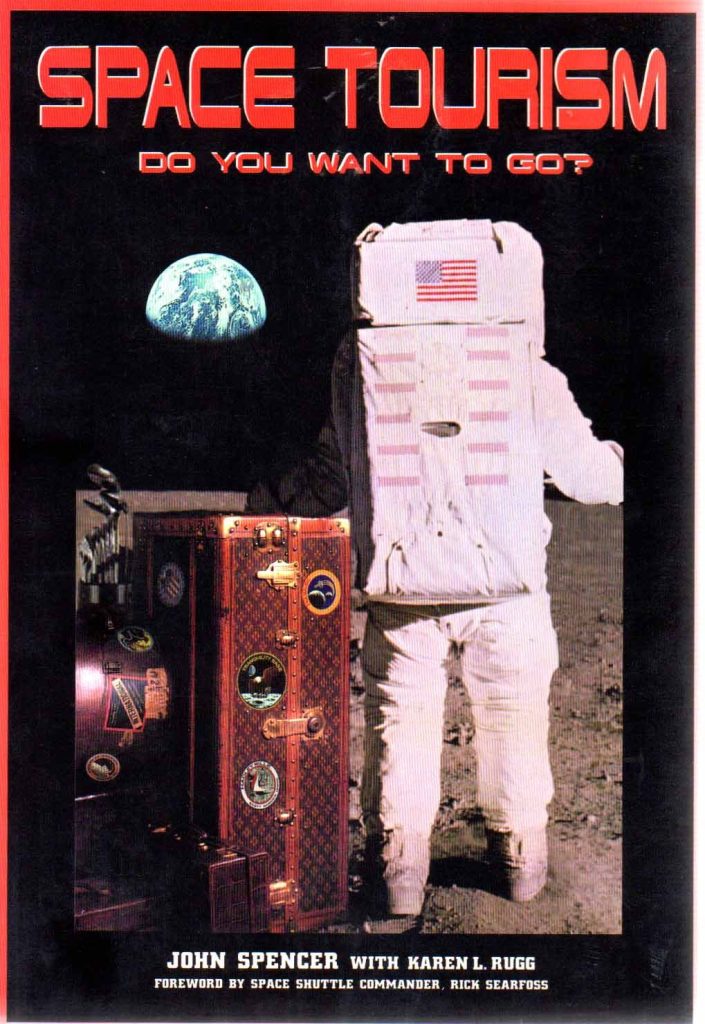Space Tourism Movement: How the Cosmic Escapes Begun

FreePik by ArtPhoto Studio
The Space Tourism Movement marked a pivotal moment in human history when the stars ceased to be a field out of reach for ordinary people. In the not-so-distant past, the idea of space tourism seemed like the stuff of science fiction. However, during the past decades, a paradigm shift has occurred, propelling the concept of commercial space travel from the realm of imagination into the realm of possibility.
The Space Tourism Movement incubated what over time became a burgeoning industry; the space tourism industry. Born out of human curiosity and a desire to explore the unknown this revolutionary movement changed the way people perceived the galactic universe and opened up the final frontier for adventurers, scientists, and dreamers alike.
But, what were this movement’s characteristics and how did it evolve through time?
Table of Contents
Defining Space Tourism Movement
Revolutions and other big changes in the world usually start from a small group of like-minded and committed people. It only takes a critical mass of daring and visionary humans to create a religion, a nation, or a social movement that can influence substantially the world and change it for either better or worse.
The increasing interest in traveling beyond Earth’s borders for tourist purposes began with baby steps during the 1970s. It was not until 1996 though – ten years after the Challenger tragedy – that NASA and the Space Transportation Association (STA) held the first “Space Travel and Tourism Industry Workshop” at NASA headquarters speeding up the wheels of commercial space travel. This was the turning point that actually ignited the engines of a new promising field. The space travel and tourism industry started to gather the interest of the Media, the scientific community, and potential investors. And consequently, the public interest soared.
Two years later, John Spencer, as he claims in his book “Space Tourism – Do You Want To Go?” cited the term “Space Tourism Movement” to describe the efforts made till 1998 toward making space accessible to all. And to also highlight the fact that space tourism was not only about space stations and rockets; it was additionally about creating unique and powerful personal experiences that up to that point didn’t even exist not to say imagined.

Like any other social movement, the Space Tourism Movement was started by people and for the people. In the beginning, only a few people believed in the commercialization of space. But they did their best to convince mainstream society that their beliefs were worthy and deserved multilateral support. And they succeeded in it.
Unveiling the Space Tourism Movement
The Space Tourism Movement represents more than just a leisure activity for the wealthy. It opened up new possibilities for scientific research, manufacturing, and resource exploration beyond Earth’s boundaries. Gradually, as the dialogue on space tourism evolved revenue started to be generated that could also fund future space missions and accelerate human progress toward becoming a multi-planetary species.
Here are some of the most important milestones that enhanced and strengthened the movement. They consisted of visionary academic papers and editorials, space capsule designs for travel, private space tourism enterprises forming, and the first breakthroughs of spaceflights that sent people on orbital journeys. One can discover all of them in the much-detailed list Spencer has included in the aforementioned book.
The Space Tourism Movement in the ’60s and ’70s
The year 1967 is the year that actually kicked off the movement. It was the year when Baron Hilton, president of the Hilton Hotel Corporation at the time, presented the paper titled “Hotels in Space” to the American Astronautical Society and planted the first seed to prepare the soil for the development of the Space Tourism Movement.
About a decade later, in 1978,G. Harry Stine, a well-known science fiction author released a series of articles about space tourism – the first of them published in OMNI magazine and titled “Ticket to Space” while a year later John Spencer formed the Space Systems Development Group (SSDG) to design and build a space habitat formed of 10 Space Shuttle external fuel tanks. Its mission was to carry up to 200 passengers into orbit.
The Space Tourism Movement in The ’80s
In entering the ’80s, the Space Systems Development Group published a relevant to the above project study and tried to convince NASA as well as the aerospace industry to fund further studies. And although their attempts were met with skepticism some alliances started to emerge indeed.
1982 was theyear that constituted a turning point for the Space Tourism Movement. NASA made a bold move and started the Spaceflight Participation Program envisioning sending private citizens on space shuttles. In 1985, Society Expeditions followed NASA’s steps and declared the Project Space Voyages program to build a vertical-takeoff-and-landing vehicle.
Although the company managed to raise close to $1.250.000 million in funds it failed to accumulate the needed amount of money for the implementation of the project and kept it in the closet. A year after the first book on space tourism was published by the Japanese Makoro Nagatomo making the publishing industry part of the Space Tourism Movement.
In 1988, the Mitsubishi Corporation granted Spencer’s Space Resort Enterprises $1.5 million to build the Space Resort simulation in Japan by forming with Spencer’s company the Spaceport Systems Corporation (SSC). As the decade was ending Tom Rogers issued the “Space Settlements: Sooner Than We Think” paper in the National Space Society magazine Ad Astra highlighting that “individuals, not governments, may be better suited for the task of creating space settlements”. At the same time, he started making contacts with governmental officers and people in authority to promote the concept of a space tourism industry.

The Space Tourism Movement in The ’90s
The ’90s was the decade when things were getting going and action on space tourism began to thicken. In 1990, the second book on space tourism was published by Dr. Patrick Collins under the title “Your Space Flight Manual: How You Can Be a Space Tourist in Twenty Years”while on December 2 of the same year, Toyohiro Akiyama, a Japanese journalist, flew to orbit for eight days (from Russia to the Mir station) with his $12 million space travel ticket paid for by a private enterprise.
In 1991 another private citizen, the British chemist Helen Sherman, traveled to orbit for eight days after winning that precious spaceflight ticket in a contest. The same year the Space World theme park opened in Japan (closed today) and Dr. Bill Gaubatz published the report titled “Space is a Place” which is considered to be the Declaration of Independence for the Space Tourism Movement. In his work, he envisioned the future of commercial space travel and the utilization of extraterrestrial territories for the benefit of humanity.
A year later, Sven Abitzsch and Fabian Eilingsfeld presented their research titled “The Prospects for Space Tourism: Investigation on the Economic and Technological Feasibility of Commercial Passenger Transportation into Low Earth Orbit” at the International Astronomical Federation Congress and the next year the Japanese Rocket Society launched a program to study the feasibility of building a space tourism business during the first flights of the reusable VTOL test rocket DC-X.
In 1995 things accelerated further because the Space Tourism Society was born which was the first non-profit entity to pioneer commercial space travel. Founded by John Spencer it was designed after the National Geographic Society model to promote scientific research and raise public awareness for the new emerging field. The same year NASA and Tom Rogers agreed to conduct a joint workshop with the main theme the design and creation of the space tourism industry. The Space Tourism Movement is moving and accelerating.
From the next year and on things start to really move forward. More and more space tourism-related activities worldwide have shown up. Papers, reports, and studies kept being published in scientific and news magazines. The X Prize Foundation and Competition were declared to ignite and foster space travel pioneering private ventures. The initial grant was aimed to reach $10 million for the private entity that would design, build, and fly a three-person space shuttle to break the 100-kilometer space frontier.
NASA and STS held the first joint workshop on Space Tourism at NASA’s headquarters in Washington D.C. That workshop signaled the first concrete recognition of the commercial space tourism industry’s potential and served as a milestone in the history of the Space Tourism Movement.
In 1997 the second NASA and STA General Public Space Travel and Tourism Workshop was held at George Washington University with more than 100 attendants focused on the potential of opening up space to the general public. In the meantime, more papers were published, more conferences were being held worldwide, mass media started paying attention to space tourism subjects, private initiatives began to emerge, surveys were conducted and people started getting more interested in space tourism subjects. All together made the Space Tourism Movement grow and push it forward.
The following year among the publication of papers, the holding of workshops and conferences, and the organizing of fairs and campaigns the flight of another citizen stands out. John Glenn, a 77-year-old former senator and Mercury astronaut, is the first civilian who fly in the Space Shuttle. During 1999 more action fueled the Space Tourism Movement. Japan blasted off the first reusable vertical-takeoff-and-landing rocket and the Bigelow Aerospace company was formed and entered ambitiously the space travel industry with the vision to build a space hotel.
The Space Tourism Movement in The 2000s
This decade set the movement on a clear track. In 2000,the MirCorp was announced aiming at commercializing the Mir Station while the Space Enterprise Council was formed under the initiative of the US Chamber of Commerce to offer the critical base for advancing the interests of the American private sector in the commercial exploitation of space.
It was also the first time that the International Space University in Valparaiso, Chile included in its summer session a design project on space tourism titled “Space Tourism, From Dream to Reality” and France entered the scene with the first meeting held in space tourism by the French national space organization (Centre National d’ Etudes Spatiales – CNES). Magazines like Forbes, Times Europe, GQ, and alike hosted articles about commercial space travel and its prospects while the number of worldwide conferences kept increasing and highlighting the discussion about sending citizens off Earth.
In 2001, Pan Am, one of the largest and leading airline companies in the world announced the First Moon Flights Club and attracted the attention of many potential space travelers. Although the company didn’t survive the year, the stone had been cast and more people were eager to explore the possibility of conquering extraterrestrial lands. Dennis Tito incarnated this dream on April 28 when he blasted off to the International Space Station on the Russian Soyuz and became the first private citizen in orbit. His story attracted the attention of the Press worldwide and multiplied the interest of the private sector to be more engaged in the space tourism industry.
This breakthrough was highlighted in every congress held following the day of the spaceflight and more sessions on space tourism were included in space-related conferences. John Spencer pioneered making the public dialogue on commercial space travel the talk of the town in events like the International Council of Shopping Centers, Tourism, Leisure and Lifestyle in LA (October 10) or the 10th annual conference of the Space Frontier Foundation in LA as well (October 19-21).
Learn more about one of the most well-known conferences about space travel The Space Tourism Society Conference
During the next year, Mark Shuttleworth, a businessman from South Africa, followed the example of Dennis Tito and became the second space tourist on April 27 flying into orbit and reaching the ISS for his eight-day trip. On the same day, Spencer’s Space Tourism Society held its fifth annual meeting and its first Space Tourism Pioneer Award Show. Dennis Tito was the one awarded while being the keynote speaker and the guest of honor. A few months later STS expanded in Japan establishing its first international partner.
Japan has started taking things seriously on commercial space trips and put a lot of effort into supporting their development. A very detailed and remarkably well-produced survey covered an entire issue of the Japanese magazine Brutus focused mainly on lunar tourism. On the other side of the world, the Zero Gravity Company has begun to offer zero-gravity experience aircraft experiences to the public who were willing to pay for it. As the year was ending one more person set off to take a seat on a trip to ISS (the 23-year-old singer Lance Bass) but failed to gather the needed funds to make his dream a reality.
The following year although the progress of the previous two years slowed down a bit, there were some quite significant events like the birth of Elon Mask’s SpaceX company, an enterprise focused on rocket manufacturing and the vision to carry humans for space trips. On the same track, Jeff Bezos followed by announcing the establishment of Blue Origin, aiming at building a 7-seat reusable space vehicle for space tourists.
Other private companies continued making progress in developing space tourism ventures as well. Space Adventures however stood out among them when it announced the world’s first privately funded mission to the ISS. China’s interest in the commercial space travel field was also raised partly due to the efforts of the Space Tourism Society to expand its influence in the country with the first formal meeting taking place for STS in Japan. At the end of 2003 Scaled Composites made a breakthrough and moved the Space Tourism Movement forward by building the SpaceShipOne vehicle.
The After 2000s Story of The Movement
Since the middle 2000s and until now the pace of the Space Tourism Movement has been widening continuously giving its turn to an emerging industry of immense potential. New milestones were reached, more money was invested and more aspirations were born.
The progress of the Space Tourism Movement unquestionably appears in all relevant reports and studies. No wonder why it is estimated that the size of the global space tourism market will rise to $8.67 billion by 2023 according to a Research and Markets report of 2022.
The Future of Space Tourism Movement
The journey from a distant dream to a burgeoning industry constitutes a testament to human ingenuity and perseverance. The Space Tourism Movement, incubated over time, has transformed the way we perceive space, turning it from an enigma into an achievable adventure.
The space tourism industry is growing year after year. It is becoming one of the most profitable economic fields with a multilevel socioeconomic impact on humanity. Space travel experts estimate that within the next three decades, people will not only enjoy affordable vacations off-Earth but will also live on planets like Mars in large-scale colonies.
The Space Tourism Movement has and will continue to create undeniably big shifts in the world.
Will you join it?
When did the Space Tourism Movement First Appear?
The year 1967 is considered to be the year that kicked off the Space Tourism Movement.
To whom does the term Space Tourism Movement belong?
The person considered to have cited the term Space Tourism Movement first is the space architect John Spencer, in his book “Space Tourism Do You Want To Go?”
What is the definition of the term “Space Tourism Movement”?
In a nutshell, the term represents the efforts made over the years to make space travel accessible to all people for commercial and recreational purposes.
How long did the Space Tourism Movement last?
It is considered to have begun in the late 1960s and is still evolving

